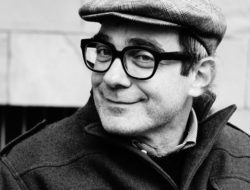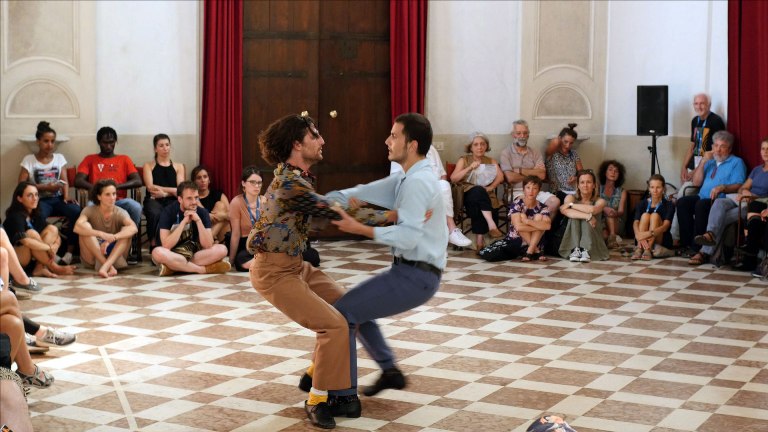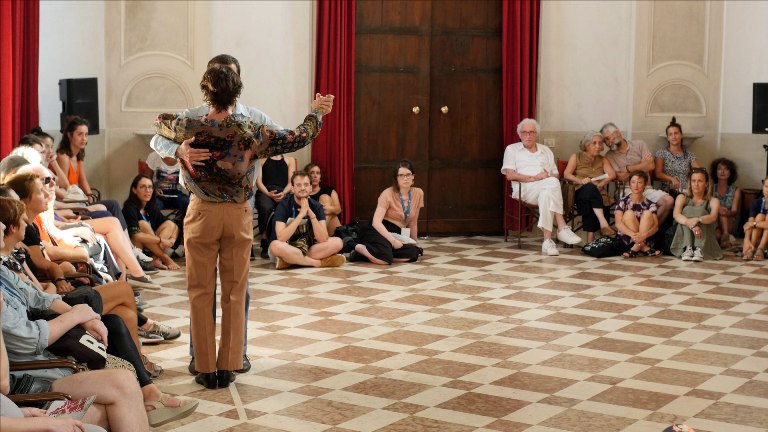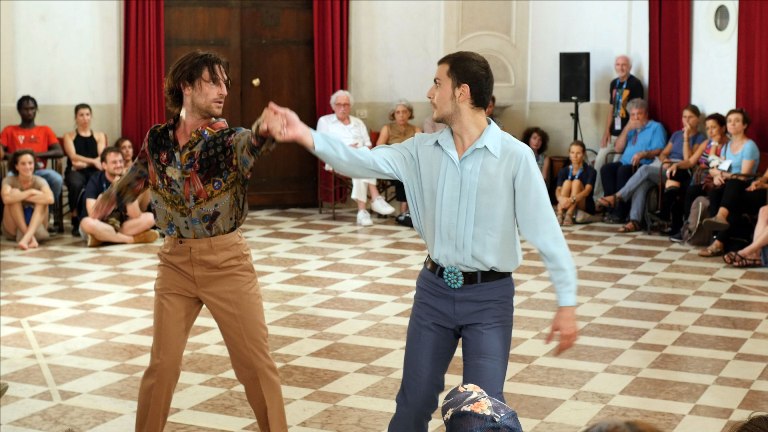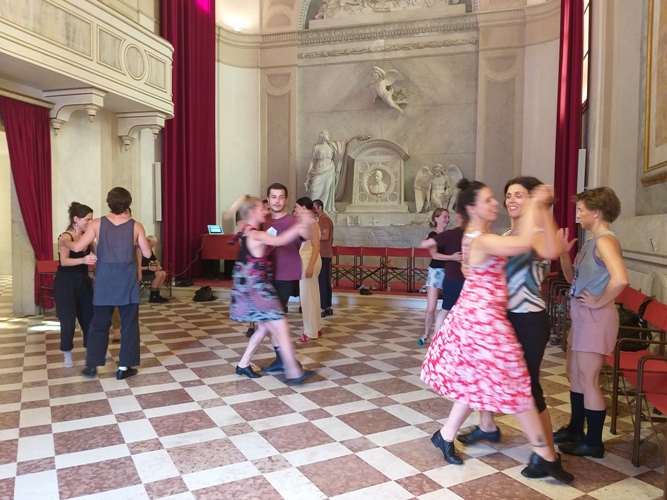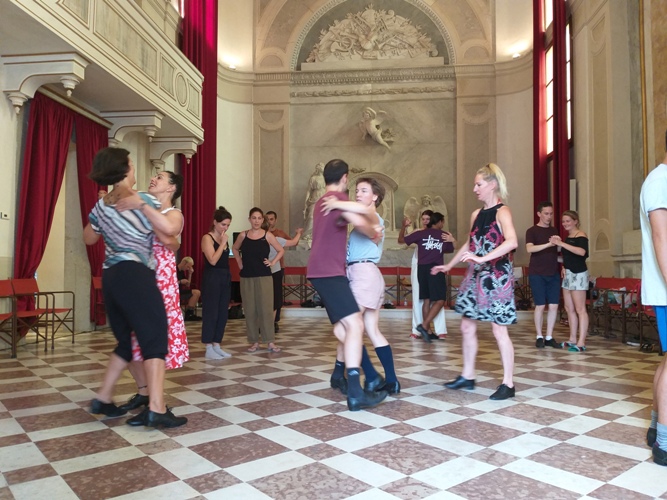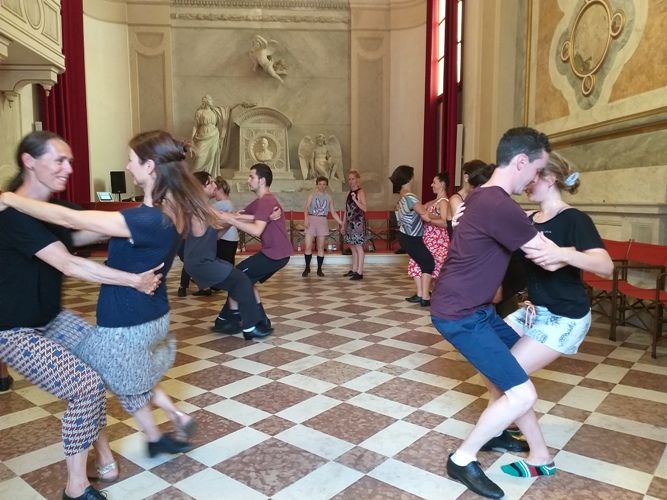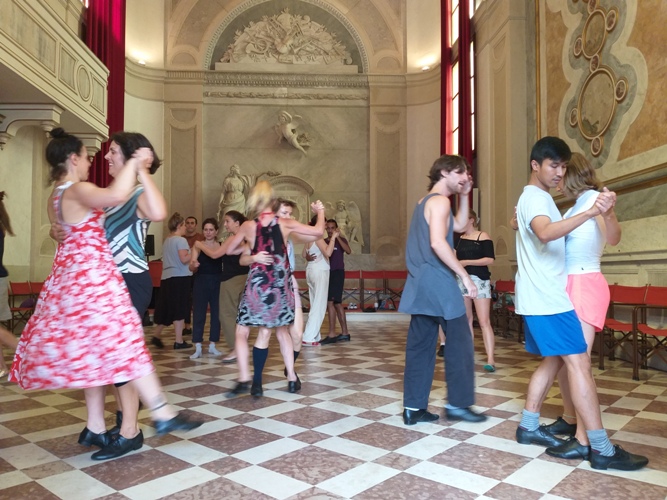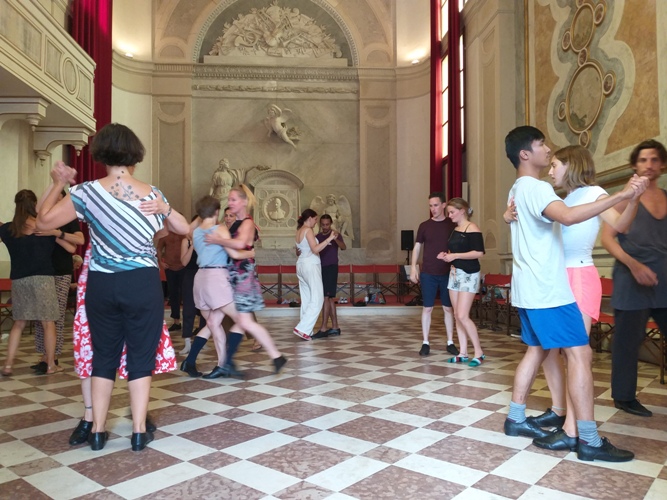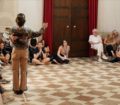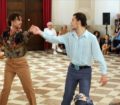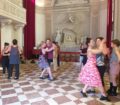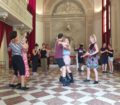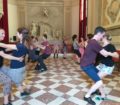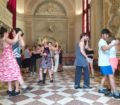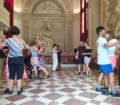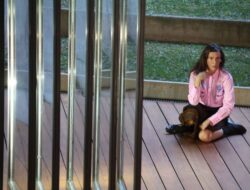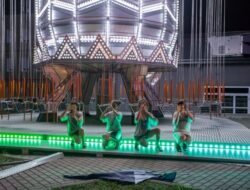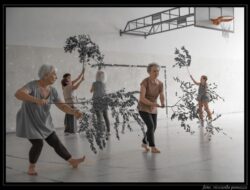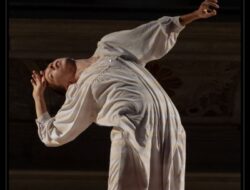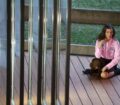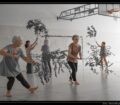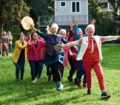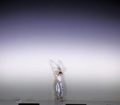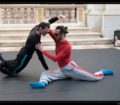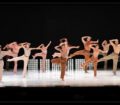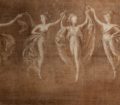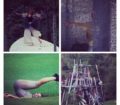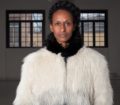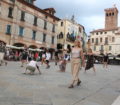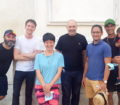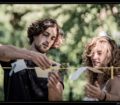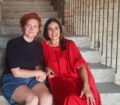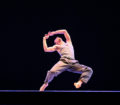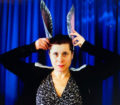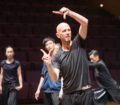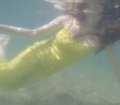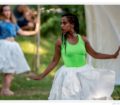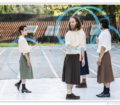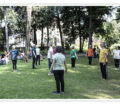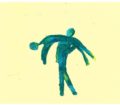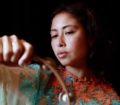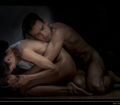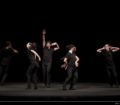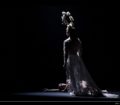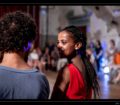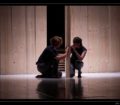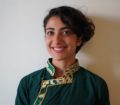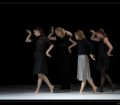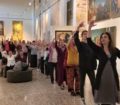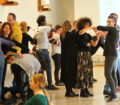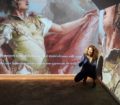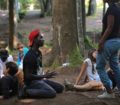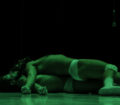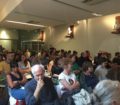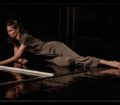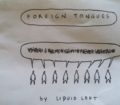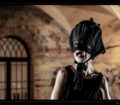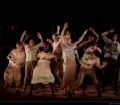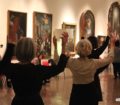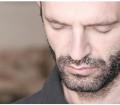ENG | “Save the last Dance for me”, 21 August 2019, Villa Ca’ Erizzo’s oratory | There are some dance terms that are hardly heard anymore — passettini, frullone, polka chinata. The latter is an Italian folk dance which flourished post-war, emerging from under the archways of Bologna, yet very few Italians today have heard of it. By few I mean that the number of people able to perform it could be counted on one hand. But that was before Alessandro Sciarroni chanced upon it and became enthralled. To tell the truth, the master of ballroom dancing Giancarlo Stagni had already taken this dance to heart and had become its champion by the 1960s. It was from him and him only that Sciarroni’s chosen exponents, Giovanfrancesco Giannini and Gianmaria Borzillo, had taken lessons.
Thus the project Save The Last Dance was born, currently being premiered at BMotion Danza 2019 in Bassano. Sciarroni’s idea is simple, but not easy or obvious: to entrust this dance to posterity, to rescue it from the oblivion of our Modern Times. The dancers Gianmaria Bonzillo and Giovanfrancesco Giannini avail there own bodies as a living archive, open to study. Others may actively participate, take a lesson or merely come along to see the show Save The Last Dance, performed by the two aforementioned dancers.
It is no coincidence that Sciarroni conferred this task to two men. The polka chinata is a quintessentially masculine dance, the reason for which merits some elucidation. In the early 1950s of post-war reconstruction, very few Italian women could afford to go to dance halls. Mischievously, some young men of Bologna developed a trend of strutting around, wooing and winking at women on the street whilst showing off their polka dancing skills with each other. They were transforming it into cursory yet tangible provocations: “tenzoni danzanti” that were performed along the pervasive porticoes of that city, to the rhythm of an accordion or barrel organ. The highlight of the display was the knack of spinning each other around whilst on bended knee. This was quite an acrobatic feat compared to the traditional polka, requiring considerable physical strength.
With his earlier show FOLK-S, inspired by Schuhplattler (a traditional Tyrolean dance), Sciarroni seemed to have laid the foundations for a study of traditions. With this new project he seems to have consolidate that further, alluding to illustrious counterparts in figures like Giovanna Marini who has made her life’s work the study and realisation of traditional Italian folk music; or Pier Paolo Pasolini who, through his Friulian poetry, tried to push back against the growing homogeneity of language and his dialect’s relegation to subcultural status by the dominance of national television.
Family Sayings | Dance Practice
Every day of the festival, Sciarroni and his dancers invite people onto a journey, a voyage between past and future through dance steps, all within the walls of Villa Ca’ Erizzo’s oratory. This small secular temple is located along the River Brenta, reachable by foot or bicycle.
Day one of the seminar brings participants together from the world over: from Asia, the Americas, Europe (including some Italians). All are made to wear men’s black leather shoes, fastened with short laces. Preliminary instructions and an outline of the genesis and intent of the project are given, after that the dance itself gets underway, accompanied by the sort of traditional music that brings to mind Italian village festivals, when polkas, mazurkas and waltzes were danced for hours, between glasses of red vino and rounds of grilled ribs.
Watching these diverse people dance, it is as though we are witnessing a migration. A transplantation of roots with all their reticulated rhizomes, repotted into new soil in order to safeguard this dance from extinction. With their ternary steps drawn on the floor, raked over by heels, scissoring between partner’s legs, it could be a picture postcard from the past, one sent by a moment in time on the brink of vanishing, addressed to those who were yet to be born.
Everybody incorporates the familiar ‘phrases’ of this dance, with both care and exuberance, ready to pass it on to someone else when they return home, replanting it in Canada, Germany, France, Britain or Indonesia.
Ready-Made
Spectators sit along the oratory walls. An urgent, pulsating music fills the air. The dancers enter, dressed in 1950-style shirts and trousers. The steps of the polka chinata begin, danced upon a solid base of ultra-rhythmic music. They perform the steps tenaciously, grasping each others’ arms and crouching at the knee. They whirl around, embracing each other as if two parts of the same whole.
They spring forcefully, vigorously, freeing all that masculine energy compressed inside their bodies. Whilst performing they maintain unyielding eye contact like honourable, valiant rivals.
Then they stop, draw a breath and start again with renewed conviction. Their stare is determined, they grip each other in a struggle marked-out by ternary steps, danced in assertive, powerful movements. Looking at them one could almost conjure up the sight and smell of those red walls of Bologna, the pitapat of shoes echoing through the lengthy colonnades, the chuckling of friends. It’s a joy just to track them visually while they spin freely in space, these increasingly sweaty bodies, battling fatigue, embroiled in a type of rodeo romp, in this bloodless ritual dance.
But little by little the strength that abounds within their dancing bodies turns into something else, something timeless. It is the music that propels our sensibilities in new, radiant directions. Music breaks up and abstracts out dance from folk dance, simply by allowing bare geometry to emerge: an eternal tension between two opposing but intimately linked forces, a circular embrace between opposites, that mythical intercultural paradigm.
At the end of the show, with insightful intuition, Sciarroni asks the dancers to do la polka chinata again, but this time accompanied by traditional music. The temporal rift that had seemed wide now closes together, in a dance step, cementing this dance into the here and now.
Masterful.
Anna Trevisan
English translation by Jim Sunderland
Cover photo: courtesy by Cult Web TV
ITA | “Save the last dance for me”, 21 agosto. Oratorio di Villa Ca’ Erizzo |
“Passettini”, “frullone”, “Polka Chinata”. Vocabolario di una danza che non c’è (quasi) più. Un ballo popolare italiano, nato sotto i portici di Bologna e fiorito nel secondo dopo Guerra, che oggi in Italia conoscono in pochi. Pochi significa che, fino ad oggi, a saperlo eseguire, questo ballo, erano solo cinque persone. Prima che Alessandro Sciarroni lo scoprisse e se ne innamorasse. A onor del vero, già negli anni ’60 il maestro di liscio Giancarlo Stagni si era preso a cuore questo ballo, diventandone custode, e proprio da lui i due interpreti scelti da Sciarroni, Giovanfrancesco Giannini e Gianmaria Borzillo, hanno preso lezioni.
È nato così il progetto “Save the last dance”, “Salviamo l’ultima danza”, presentato in questi giorni in prima nazionale al festival bassanese BMotion Danza 2019. È un’idea semplice ma non facile e per niente ovvia, quella di Sciarroni: trasmettere ai posteri questo ballo, sottrarlo all’oblio dei Tempi Moderni, usando i corpi dei suoi due danzatori, Bonzillo e Giannini, come archivio vivente al quale far accedere altre persone: attivamente, partecipando ad una lezione, oppure come pubblico, assistendo allo spettacolo Save the last dance, interpretato dai due danzatori.
Non è un caso che Sciarroni abbia affidato proprio a due uomini questo compito. Perché la Polka Chinata è un ballo squisitamente maschile. E la ragione merita una spiegazione. All’inizio degli anni ’50 , nell’Italia della ricostruzione, erano davvero poche le donne che potevano permettersi di frequentare le balere. Gli spregiudicati giovani di Bologna cominciarono allora a pavoneggiarsi e ad ammiccare alle donne per strada, ballando tra loro la polka, e trasformandola in breve in vere e proprie sfide: “tenzoni danzanti” che venivano eseguiti lungo i proverbiali portici, al suono di un organetto o di una fisarmonica. Il culmine della gara erano gli avvitamenti a due eseguiti con le gambe piegate. Una variazione quasi acrobatica rispetto alla polka tradizionale, che richiedeva e richiede una notevole forza fisica.
Se con lo spettacolo Folks, ispirato al ballo degli Schuhplattler (ballo tradizionale tirolese) Sciarroni sembrava aver gettato le basi di un lavoro sulle tradizioni, con questo nuovo progetto sembra consolidarlo, trovando degli illustri omologhi in figure come quelle di Giovanna Marini che dello studio, della ricerca e dell’esecuzione della tradizione musicale popolare italiana ha fatto il proprio impegno di vita; oppure Pier Paolo Pasolini che, con le sue poesie scritte in dialetto friulano, ha voluto combattere contro l’omologazione del linguaggio e la sua relativa subcultura create dalla televisione.
Lessico famigliare | Dance practice
Ogni giorno, per tutta la durata del festival, Sciarroni e i suoi danzatori invitano la gente ad aprire un varco, una breccia tra il passato e il futuro, a passo di danza, nello spazio dell’Oratorio di Villa Ca’ Erizzo. Si arriva a piedi o in bicicletta fino questo piccolo tempio laico lungo il fiume Brenta.
Tra i partecipanti al primo giorno di seminario ci sono persone da tutto il mondo: Asia, Americhe, Europa. C’è anche qualche italiano. A tutti vengono fatte indossare delle scarpe nere da uomo, con la tomaia in pelle, da allacciare con corte stringhe. Vengono date delle istruzioni e delle informazioni preliminari sulla genesi e sugli intenti del progetto e poi si inizia a ballare, accompagnati da una musica popolare che fa tornare in mente le sagre di paese, quando si ballavano per ore le polke e le mazurke e i valzer, tra bicchieri di vino rosso e carne ai ferri.
Guardando ballare queste persone, sembra di assistere ad una migrazione. Una migrazione delle radici, del loro reticolato rizoma che si innesta in nuovi terreni per non lasciarsi estirpare. Con i loro passi ternari disegnati sul pavimento, strisciati sui tacchi, sforbiciati tra le gambe del partner, sembrano scrivere una cartolina inviata da un tempo in via di estinzione, indirizzata a chi verrà dopo di loro. Tutti insieme incorporano attenti e divertiti il “lessico famigliare” di questa danza, pronti a trasmetterlo a qualcun altro al loro ritorno a casa: in Canada, in Germania, in Francia, in Gran Bretagna, in Indonesia.
Ready-made
Gli spettatori siedono lungo il perimetro dell’Oratorio. Entrano i danzatori, vestiti con camicie e pantaloni anni ’50. Iniziano a danzare i passi della Polka Chinata, sul tappeto sonoro di una musica fortemente ritmata. Eseguono con grande grinta precisione il passo “polka chinata”, afferrandosi per le braccia e chinando le ginocchia. Ruotano vorticosamente, abbracciati l’uno all’altro come due frammenti di uno stesso intero.
Compiono questo passo con forza, con vigore, liberando tutta l’energia maschile dei loro corpi. Mentre lo eseguono si guardano negli occhi come probi e valorosi rivali.
Poi si fermano, prendono fiato e ripartono, con nuova convinzione, gli sguardi fissi e decisi, avvinghiandosi compostamente in una lotta scandita da passi ternari, danzati in modo assertivo, possente. Guardandoli sembra di sentire l’odore rosso dei muri di Bologna, lo scalpiccio delle suole trascinate lungo le strade, le risate degli amici. Seguirli con lo sguardo è un piacere, mentre volteggiano liberi nello spazio, i corpi sempre più sudati, sempre più stanchi, avvinti in un rodeo danzante, in una danza rituale e incruenta.
Ma poco a poco la forza che abita i loro corpi danzanti si trasforma in qualche cosa d’altro, senza tempo. Perché la musica orienta il senso in direzioni nuove, radianti. La musica scorpora e astrae la danza dal ballo popolare, lasciando emergere, semplicemente, la nuda geometria: una tensione eterna tra due forze contrarie ma intimamente legate una all’altra, un abbraccio circolare tra gli opposti, mito e archetipo interculturale.
Con un’intuizione quasi geniale, a fine spettacolo, Sciarroni chiede ai danzatori di danzare nuovamente la polka chinata ma, questa volta, accompagnati dalla musica tradizionale. Il varco temporale aperto poco prima si richiude così a passo di danza, sigillando questa danza nel qui e ora.
Magistrale.
Anna Trevisan
Foto di copertina: Cult Web TV
BMotion Danza 2019 21 agosto, Oratorio di Villa Ca’ Erizzo, Bassano "Save the last dance for me" Coreografo e regista: Alessandro Sciarroni Interpreti: Gianmaria Borzillo, Giovanfrancesco Giannini Progetto sviluppato in collaborazione con: Santarcangelo Festival, Gender Bender, Danzaurbana e CSC – Operaestate Festival
Tags: #review, Alessandro Sciarroni

